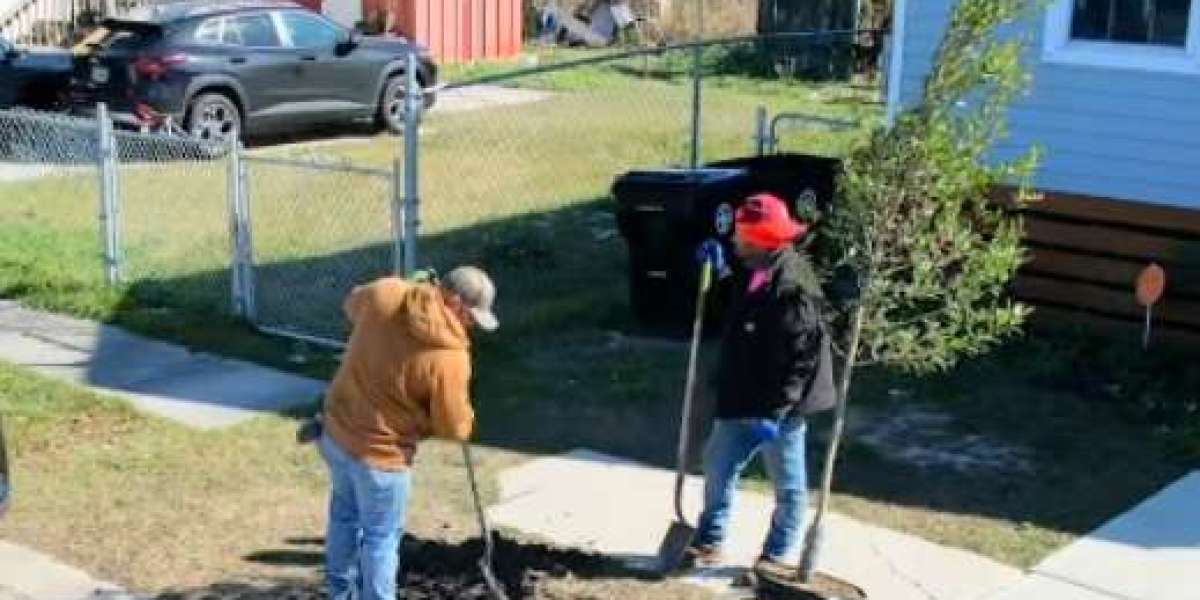Tree removal can be a daunting task, especially in a vibrant city like New Orleans where trees are not only part of the landscape but also a crucial component of the ecosystem. The lush greenery, while beautiful, presents unique challenges when it comes to maintenance and removal. Whether you’re dealing with storm damage, disease, or simply the need for more space, DIY tree removal can be tempting. However, this task is not without its risks. In this article, we will explore essential safety tips and best practices for DIY tree removal, ensuring that you can tackle the job with confidence and care.
Understanding the Risks of DIY Tree Removal
Before diving into the process of tree removal, it’s important to understand the inherent risks involved. According to the U.S. Bureau of Labor Statistics, tree care and removal can be among the most dangerous jobs, with a high incidence of injuries and fatalities. Common risks include falls from heights, being struck by falling branches, and equipment-related injuries. These risks are amplified in urban settings like New Orleans, where power lines, neighboring structures, and other hazards can complicate the process. To mitigate these risks, it is crucial to assess your experience level and the complexity of the tree removal task at hand.
Assessing the Tree and Surrounding Area
Before starting any tree removal project, take the time to thoroughly assess the tree and its surroundings. Consider its size, health, and position relative to nearby structures, power lines, and other trees. A general rule of thumb is that the tree’s height is roughly the distance you should maintain from any structures. In New Orleans, where many trees are large and established, it’s crucial to think carefully about the trajectory of the fall. If you're unsure about the tree’s stability or the potential risks, it may be best to consult a professional arborist. They can provide valuable insights and help ensure that the job is done safely.
Gathering the Right Equipment
Having the right tools for the job is essential for safe and effective tree removal. Basic equipment includes a chainsaw, hand saw, ropes, and safety gear such as a hard hat, goggles, gloves, and steel-toed boots. When using a chainsaw, make sure it’s in good working order and that you are familiar with its operation. Always have a first aid kit on hand in case of emergencies. Additionally, consider using a safety harness if you are working at heights or climbing the tree. Proper equipment not only makes the job easier but also significantly reduces the risk of accidents.
Planning the Tree Removal Process
Once you’ve assessed the tree and gathered the necessary equipment, it’s time to create a plan for the removal process. Establish a clear area where the tree will fall, ensuring that it is free of obstacles and people. This area should be at least twice the height of the tree. Mark escape routes so you know where to go in case of an emergency. It’s also wise to have a partner or helper nearby during the removal process. This person can assist you with equipment, provide a second set of eyes on the situation, and help in case something goes wrong.
Executing the Cut Safely
When it comes time to make the cuts, follow the principles of proper tree felling techniques. Start by making a notch cut on the side of the tree facing the direction you want it to fall. This notch should be about one-third of the way into the tree. Then, make a back cut on the opposite side, slightly above the bottom of the notch. As you cut, watch for signs that the tree is beginning to lean in the desired direction. Once you see it starting to fall, quickly move to your pre-established escape route. Remember, safety is your priority, and if you feel unsure at any moment, stop and reassess the situation.
Dealing with Tree Debris and Cleanup
After successfully removing the tree, the cleanup process begins. This includes cutting the tree into manageable pieces and removing branches and debris from the area. Be cautious while handling large pieces of wood, as they can be heavy and unwieldy. Use a chainsaw or hand saw to cut the wood into smaller sections for easier handling. Dispose of the debris according to local regulations; in New Orleans, many areas offer yard waste collection services. Proper cleanup not only improves the appearance of your property but also ensures that you avoid any hidden hazards that could result from leftover debris.
Environmental Considerations in New Orleans
It’s essential to consider the environmental impact of tree removal, particularly in an ecologically rich area like New Orleans. Trees play a vital role in urban ecosystems, providing shade, habitat for wildlife, and contributing to air quality. Before removing a tree, consider whether it can be pruned or treated instead. If removal is necessary, think about planting a new tree in its place to support local wildlife and maintain the ecological balance. Furthermore, check local regulations regarding tree removal, as some species may be protected, and permits may be required.
When to Call in the Professionals
While DIY tree removal can be rewarding, there are times when it’s best to leave the job to the professionals. If the tree is particularly large, leaning dangerously, or located near power lines and structures, it’s advisable to hire a certified arborist. Additionally, if you feel overwhelmed or unsure about any aspect of the process, seeking professional help can prevent accidents and ensure a safe outcome. Professional tree services are trained to handle complex removals safely and efficiently, often saving you time and reducing risks.
Conclusion: Prioritizing Safety in DIY Tree Removal
In conclusion, while DIY tree removal in New Orleans can be a satisfying project, it is imperative to prioritize safety throughout the process. By understanding the risks, assessing the tree and surroundings, gathering the right equipment, and planning each step carefully, you can significantly reduce the chances of accidents. Remember that your safety and the safety of those around you should always come first. If in doubt, don’t hesitate to consult professionals who can guide you through the process or take over the task entirely. Ultimately, responsible tree care not only benefits your property but also contributes to the ecological health of New Orleans.



